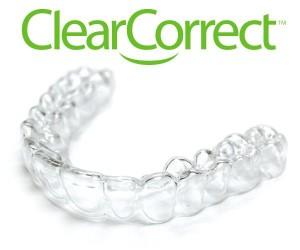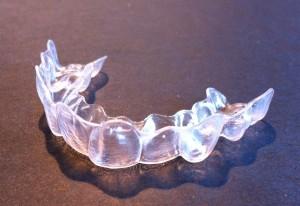 When it comes to patents and intellectual property the law has traditionally been notoriously uneven and unclear about what can and cannot be patented. By design, concepts that are considered obvious cannot be patented, which is why anyone can make a book, a TV or a wheel. But the bar for what is and what is not obvious is always shifting, based on politics, money or simply the whims of the people making the decisions. And it gets even messier when you mix in new and emergent technology like 3D printing and 3D models. This summer, Federal courts are about to decide exactly how patent law will be applied to digital representations of real world objects, or 3D digital models.
When it comes to patents and intellectual property the law has traditionally been notoriously uneven and unclear about what can and cannot be patented. By design, concepts that are considered obvious cannot be patented, which is why anyone can make a book, a TV or a wheel. But the bar for what is and what is not obvious is always shifting, based on politics, money or simply the whims of the people making the decisions. And it gets even messier when you mix in new and emergent technology like 3D printing and 3D models. This summer, Federal courts are about to decide exactly how patent law will be applied to digital representations of real world objects, or 3D digital models.
We took a look at this case back in January, but now as the year has gone on, the case is moving its way toward higher courts.
We’ve all probably seen those ads for Invisalign on TV, the clear, mouth appliances that were created as an alternative to traditional metal braces. But for a company that made so many TV commercials full of happy people smiling about their invisible braces, they have a notorious history of legal battles and have even had allegations of patent fraud leveled against them. Mostly due to their ongoing patent infringement battles against their primary competitor ClearCorrect, who Invisalign has accused of blatant patent infringement. Invisalign parent company Align Technology holds several patents for the methods used to produce their orthodontic teeth aligners, including the use of 3D digital models of patients’ teeth being used to 3D print customized aligners.
The process for creating the clear orthodontic aligners used by each company is quite similar, that is clear. But the question at the heart of the case is a challenging one: how much of a process can someone hold a patent on, and when does a process become obvious? Perhaps back in the late ’90s, when Align developed Invisalign, using a 3D model to create custom invisible teeth aligners was new and inobvious, but technology and the way that we use it has changed dramatically in the last decade and a half. The concept of a 3D model is clearly an obvious invention, but is the idea of using a 3D model to serve a specific purpose?
 Currently Align holds key patents for their process which includes generating 3D models of a patient’s teeth so a computer program can create a series of clear aligners, each with incremental changes that encourage the teeth to shift into a new more desirable position. The aligners are 3D printed on a stereolithography dental 3D printer using these 3D models. However, because Align owns several key patents for this process, rival company ClearCorrect sends digital scans of their patients’ teeth to Pakistan where they are turned into a 3D model and then sent back to the States so they can be 3D printed. Clearly, although ClearCorrect isn’t going to admit it, this additional step is being taken to avoid violating patent laws in the US.
Currently Align holds key patents for their process which includes generating 3D models of a patient’s teeth so a computer program can create a series of clear aligners, each with incremental changes that encourage the teeth to shift into a new more desirable position. The aligners are 3D printed on a stereolithography dental 3D printer using these 3D models. However, because Align owns several key patents for this process, rival company ClearCorrect sends digital scans of their patients’ teeth to Pakistan where they are turned into a 3D model and then sent back to the States so they can be 3D printed. Clearly, although ClearCorrect isn’t going to admit it, this additional step is being taken to avoid violating patent laws in the US.
Align took their case to the US International Trade Commission (ITC), a bipartisan, federal agency in charge of policing and protecting US businesses from unfair trade practices, and that includes patent and copyright infringement. Align says that by transmitting the custom digital models of a patient’s teeth electronically ClearCorrect is essentially importing them, which is against by the law pertaining to unfair import and trade practices. In 2014 the ITC agreed with Align and said that transmitting 3D models digitally could be considered illegal importing of patented material.
ClearCorrect quickly appealed the ITC ruling directly to the Federal Circuit for the US Court of Appeals, saying that a 3D model is not a manufactured article and not subject to import laws. They are also claiming that several of the patents held by Align are invalid and that they have double patented several processes. A double patent is when a company makes slight and obvious changes to a product or process in order to prolong the patent’s term.
If the Federal Court upholds the ruling in favor of Align, then that means that companies that 3D print parts from an unlicensed third party 3D model could be considered to be violating patents. So if someone were to download a 3D model of a specific object, like say a replacement part for an appliance, and print it, they would be just as culpable of violating a copyright as the person who created the 3D model. Alternately, many businesses that manufacture parts and simple components are concerned about the ability of people to 3D scan their designs, turn them into 3D models, and simply replace them as needed. What would have traditionally been a customer will now no longer need to pay for the replacement parts as they essentially become a competitor. Technically this company would be able to sue the person 3D printing their own replacements because they would be violating their patents.
“Our guess, and it is only a guess, is that the Federal Circuit will not want to open the floodgates and allow digital models to be patented. It seems more likely that the court will rule that digital models are intangible objects, and that even if they are ‘articles’ for an ITC case, they are not ‘articles of manufacture’ under U.S. patent law. This may seem like legal mumbo jumbo, but, on such distinctions, important issues can turn. If the court so rules, the battle probably will not end there. As 3D printing from 3D scans becomes more common, parts companies will probably lobby Congress to beef up protection for digital models,” explained IP lawyer and 3D printing expert John Hornick & Carlos Rosario in their article about the case on 3D Printing Progress.
The Federal Circuit’s decision, regardless of the outcome, will have a profound effect on the 3D printing industry, and possibly even the future of patent law itself. If they rule in favor of Align, then we’ll see if the business industry learned any lessons from the music industry and the RIAA’s response to illegally downloaded music. It’s just my opinion, but I’m highly skeptical that they did. If the Court rules against Align, and says that 3D models are not considered “articles of manufacture” by current patent laws then that will just start a new battle, likely to be fought in Congress. You know, that place that is traditionally unfriendly to the needs and wants of big business.
Subscribe to Our Email Newsletter
Stay up-to-date on all the latest news from the 3D printing industry and receive information and offers from third party vendors.
You May Also Like
3D Printing Financials: Fathom Struggles in Financial Quicksand During Critical Transition
Facing a year of key transitions and financial pressures, Fathom (Nasdaq: FTHM) has filed its annual report for 2023 with the U.S. Securities and Exchange Commission (SEC). The document outlines...
Latest Earnings Overview for Australian 3D Printing Firms Titomic and AML3D
Australian 3D printing manufacturing firms Titomic (ASX: TTT) and AML3D (ASX: AL3) reported their financial results for the period from July to December 2023, marking the first half of their...
3D Printing Webinar and Event Roundup: April 7, 2024
Webinars and events in the 3D printing industry are picking back up this week! Sea-Air-Space is coming to Maryland, and SAE International is sponsoring a 3D Systems webinar about 3D...
3D Printing Financials: Unpacking Farsoon and BLT’s 2023 Performance
In the Chinese 3D printing industry, two companies, Farsoon (SHA: 688433) and Bright Laser Technologies, or BLT (SHA: 688333), have recently unveiled their full-year earnings for 2023. Farsoon reported increases...

































